In the footsteps of Nansen
Meet the tribe working on the RV «Kronprins Haakon».
A tribe of 36 scientists set sail to the Arctic Ocean on board research icebreaker Kronprins Haakon to study the northern Barents Sea in spring as part of the Nansen Legacy project. Despite all the technological advances since Nansen’s time you still need a good mix of skills and characters to make the mission a success. Our tribe certainly had that mix and it was a privilege to lead the tribe on its Arctic mission together as chief and co-chief.
The chieftains: Martin and Philipp
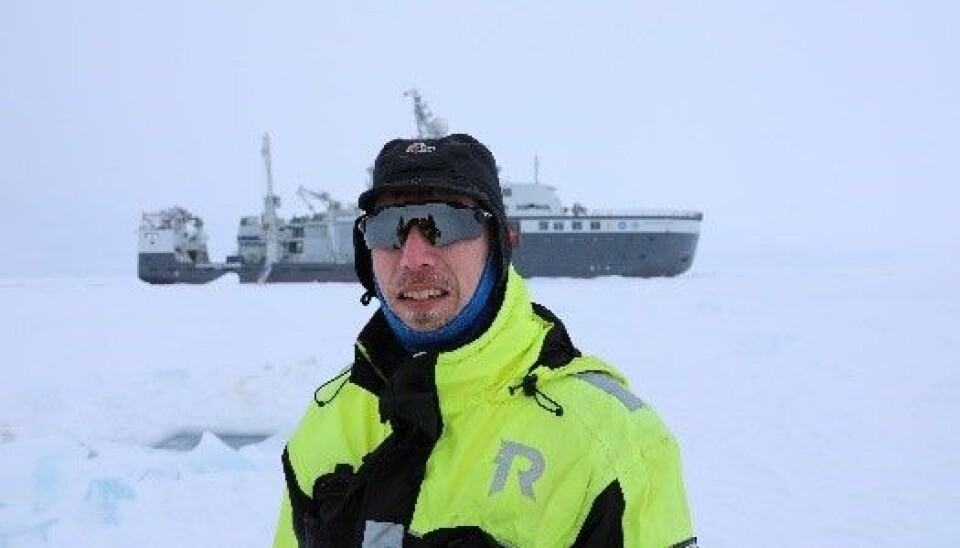

The four musketeers: Peter, Mikko, Amalia and Haakon

Upon arrival at the sea ice station you might be surprised by a strange sight: four figures dressed in black armour carrying tons of equipment down the gangway onto the ice. You are witnessing the four musketeers in action. Once their equipment is secured on large sledges, they mount their iron horses and head out to the dive site. Quite commonly you see them heading back to the ship shortly after arrival at the dive site because a piece of their arsenal is missing or non-functional but that is not surprising given their multipurpose weaponry required to (chain)saw holes into the ice and slurp, suck or spear any possible creatures that dare to cross their path below the Arctic sea ice.
The mud gang: Silvia, Arunima, Eric and Thaise
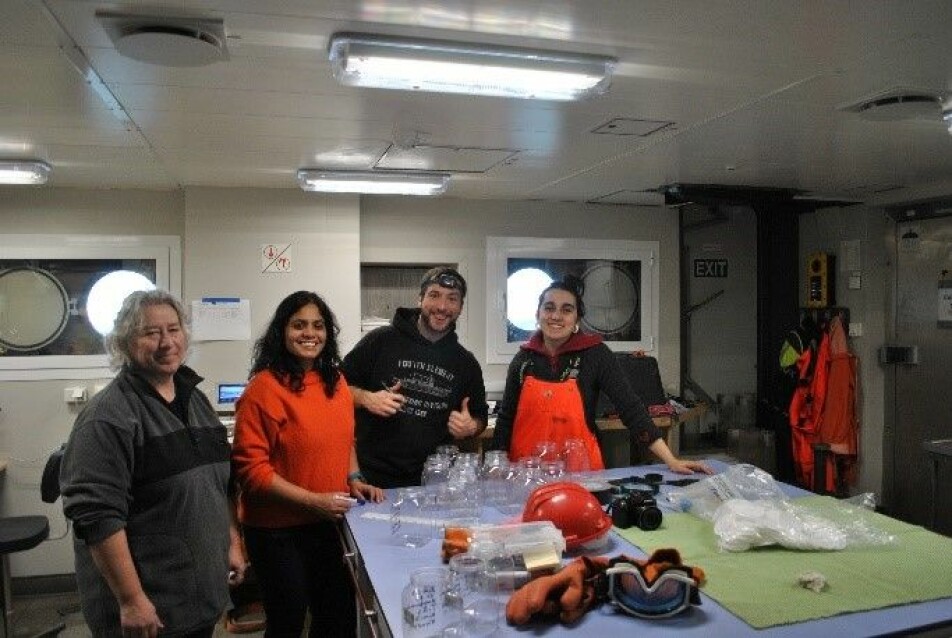
You can easily identify the members of the mud gang by the looks of their Regatta suits. Sieving through block after block of seafloor sediments leaves not only traces on Regatta suits but also on door handles. Although a rather dirty business and the reason for the mud gang to always come last in the sampling order, an astonishing diversity of seafloor creatures reveals itself upon removal of the mud. It is this diversity of life and associated activities that the mud gang is after. Thus, the lesson to be learned here is: never judge a book by the looks of its cover.
Girls with an appetite: Robynne, Helene, Julia and Doreen
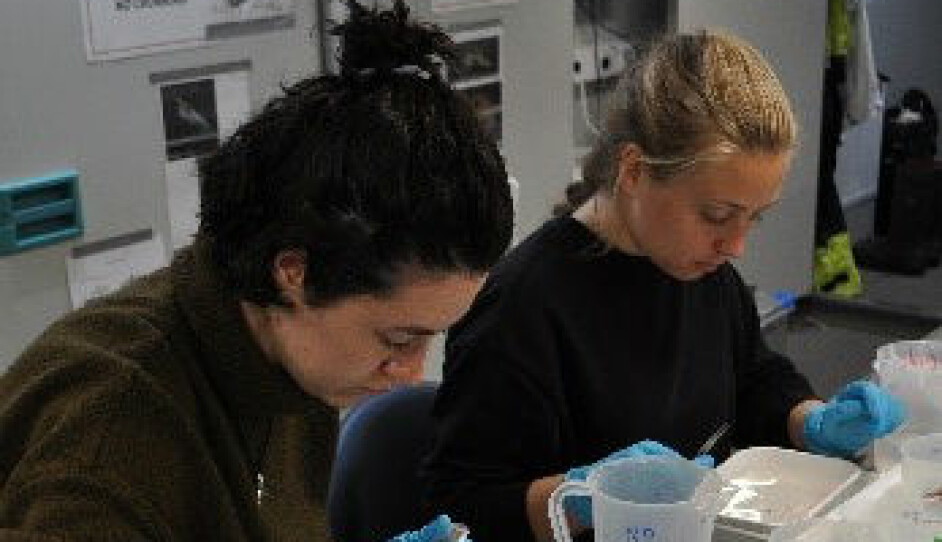
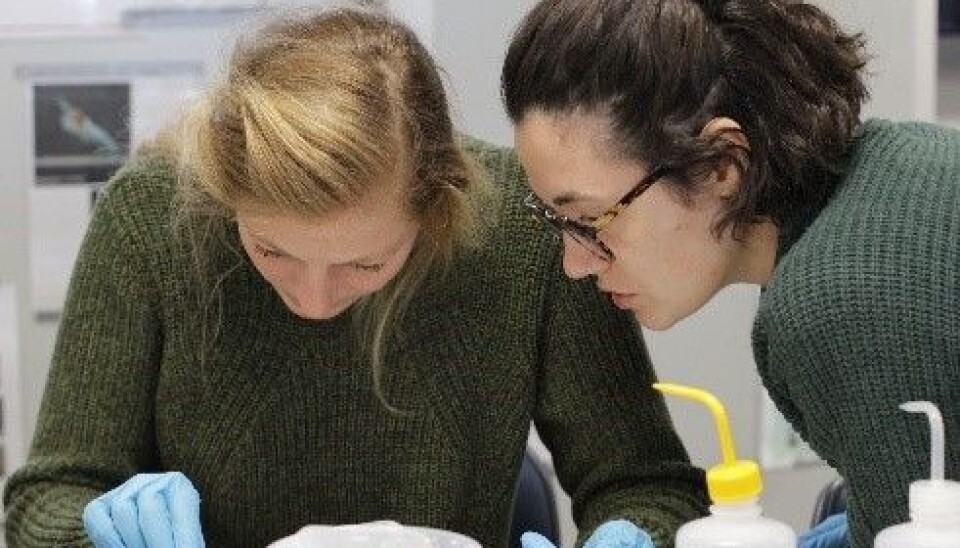

There is hardly one daily meeting without the desperate call for “one more net please”. Although a nightmare to the neatly planned sampling program, the call for yet another net can be excused by the large appetite for small crustaceans. Once collected, the little creatures are picked one by one and sorted by species to reveal the secrets they withhold. Extracting information on their energy content, contaminant level and what they have eaten will teach us a great deal more about the critical role they play in the Arctic marine food web.
Boys with toys: Jens and Tore
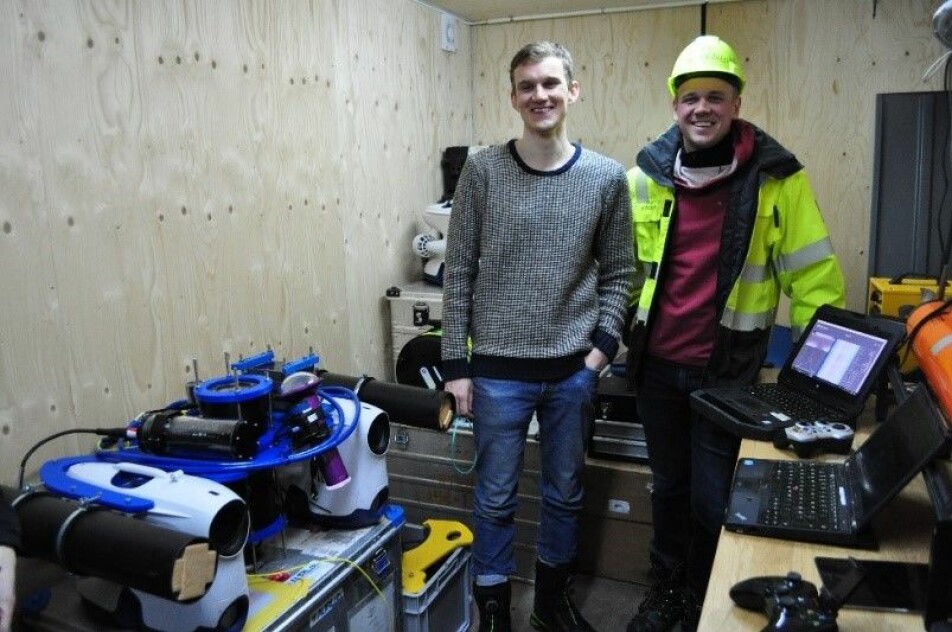
Everybody knows that boys like to play with toys but the type of gadgets dealt with here goes way beyond any childhood dreams. A bad(man) mobile cruising the surface of the sea while a torpedo equipped with an array of sensors cruises below the sea surface and the double BlueEye rig mapping the underside of sea ice. No feat that cannot be accomplished and no code that cannot be re-programmed. A mind-boggling amount of data collected leaves the “hunter and gathering” type behind in wonder and admiration.
Miss Snow-How and Mister Ice: Polona and Adam
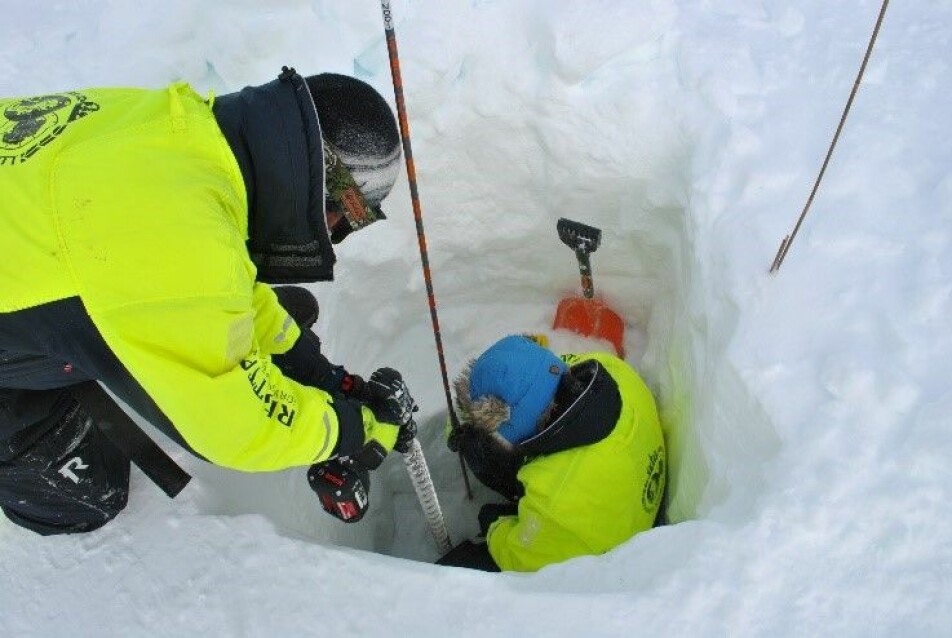
On her knees, immersed in a snow pit Miss Snow-how unveils the secrets of snow. Even stains of poo in the snow are not secure from her inquisition. Unfortunately, the identity of the poo owner could not be verified. On her side is Mister Ice who can read an ice floe like others read a city map, always finding us the perfect parking position. In tandem Miss Snow-how and Mister Ice go on long trips and if it weren’t for the good food on board they might have wandered off into the white unknown.
Citizens from outer space: Stephen and Matthew
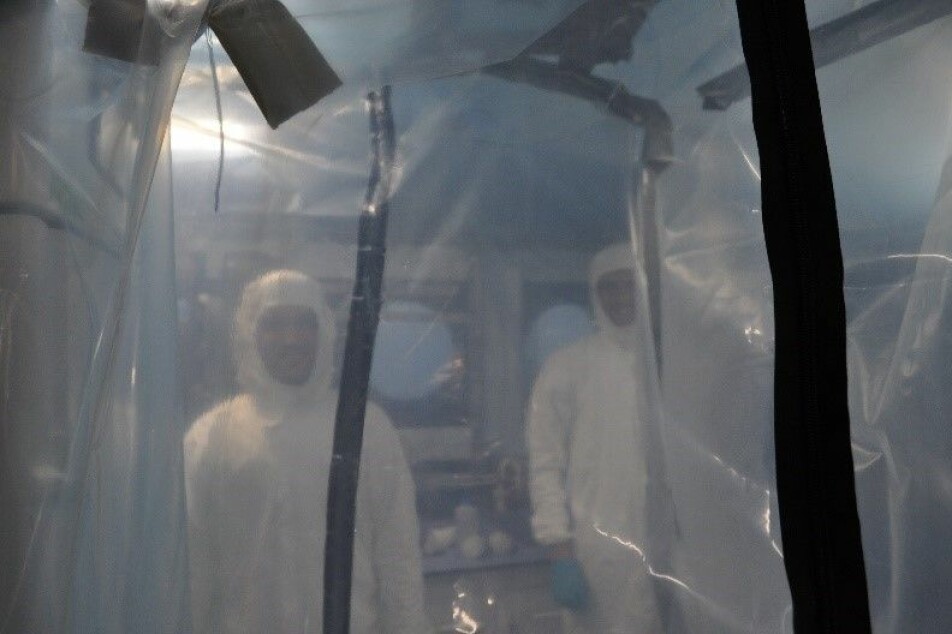
Dressed in space suits and cocooned in a plastic bubble the two citizens from outer space are in search for a metal trace. Detecting trace metals in seawater in homeopathic concentrations is their business, so don’t mess around their lab.
The chief guardian angel: Rupert
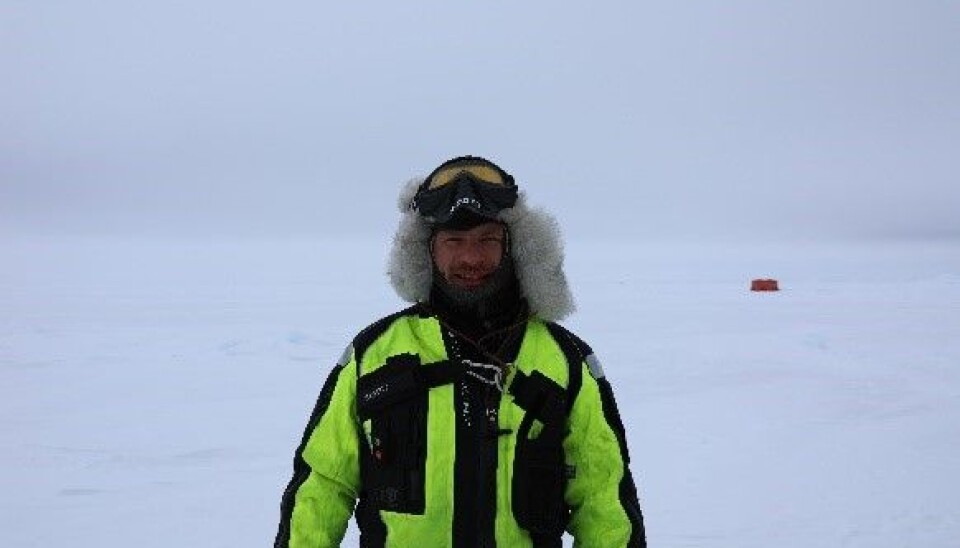
A flock of nerdy scientists wandering about on thin ice in the realm of polar bears need someone looking after them. Fortunately, we have our own guardian angel standing aloft the largest chunks of ice to ward off any unwanted visitors. He has support from a flock of willing helpers that stand their ground in the frozen landscape or scan the horizon from the more cosy look-out on the bridge.
The radio-activists: Marti and Lasse
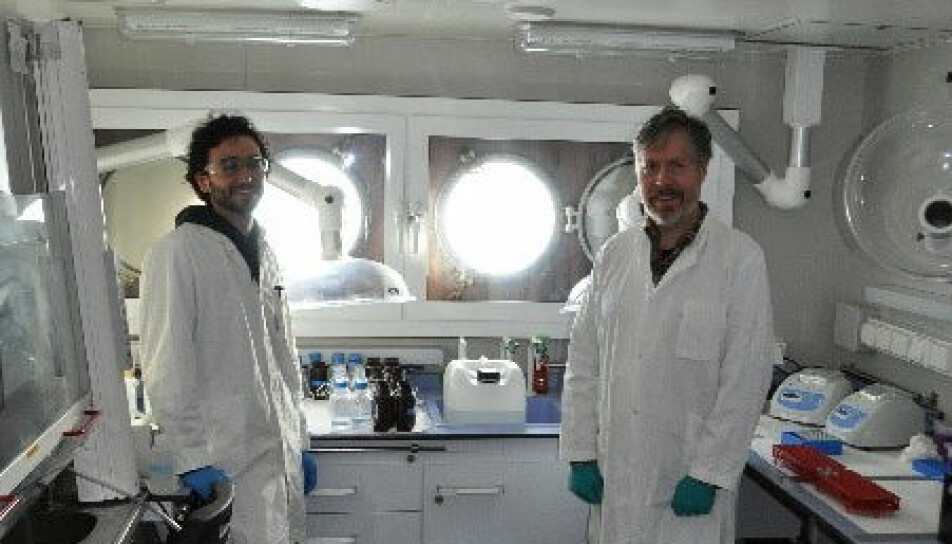
Only with special permission are you allowed to enter the realm of the radio-activists. Behind closed doors radioactive doses are administered to smallest of the smallest ocean creatures to measure their activity. This might sound like a purely academic exercise but it is the smallest of the smallest that make the world go round, so thank the radio-activists for their secretive business.
The egg hatcher: Christine

Some birds hatch an egg or two, some half a dozen but to hatch them in the thousands needs a special talent, especially when hatching eggs in a refrigerator. A lot of patience is needed but rewarded with countless tiny crustacean hatchlings.
Mother of algae and gut doctor: Karoline and Snorre

Most of us take algae for granted just as the oxygen they produce but not so the mother of algae. She tends and cares for her beloved algae and portraits them in the best light. She even puts them on exhibition. Her lab companion is the gut doctor who investigates the gut contents of crustacean grazers for what type of algae they have actually eaten. Here the motto goes “you are what you eat”.
The puppet master: Yasemin
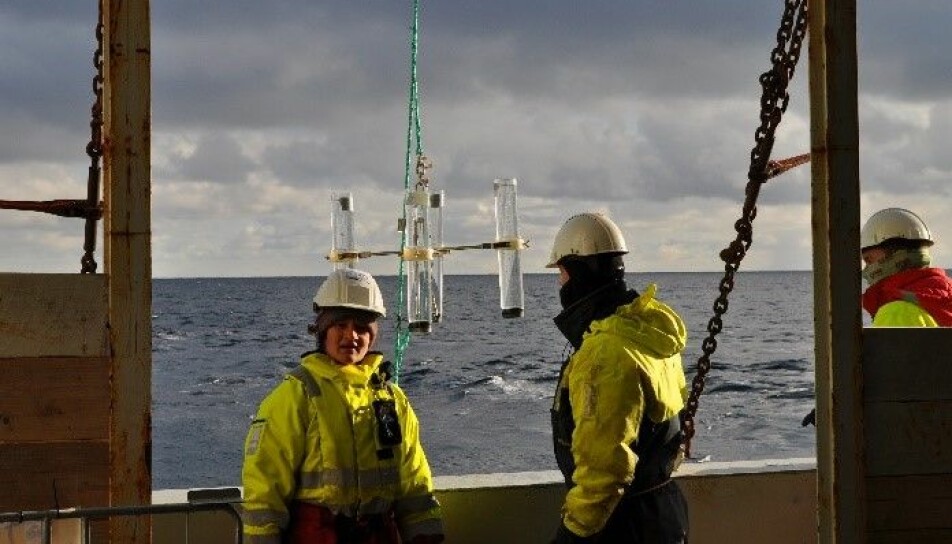
A puppet on the string is child play compared to mastering a 200 m contraption with 18 water-filled cylinders on a rocking boat in ice-covered seas. The cylinders intercept tiny particles on transit to the abyss and give us an idea about the ocean’s capacity to adsorb carbon dioxide from the atmosphere. Thus, the recovery of the string of cylinders is greeted with a sigh of relief.
Spectral-woman and Spectral-man: Natalie and Tristan
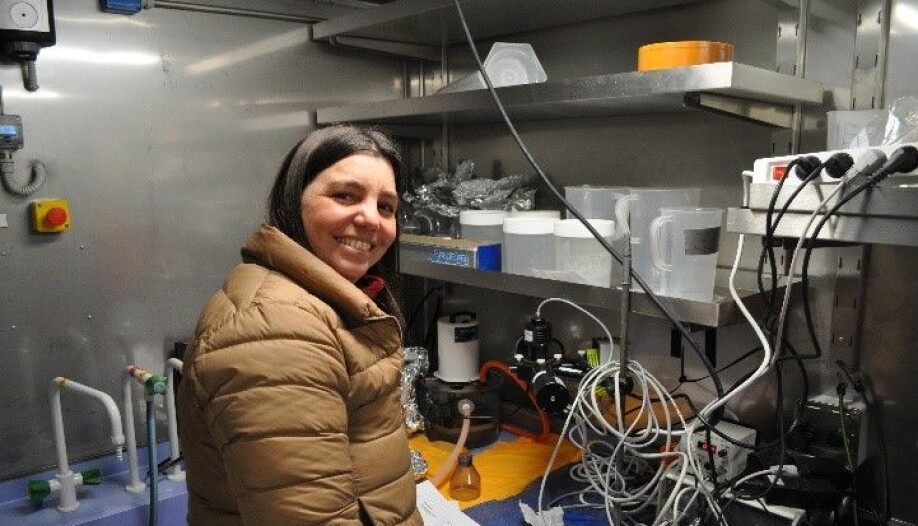
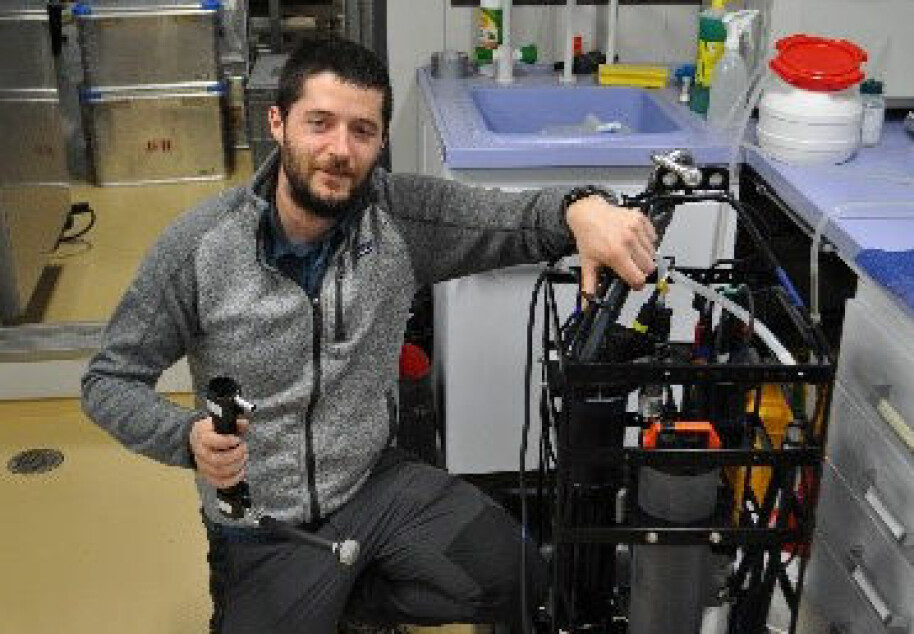
If you ever wondered what it is like to go multispectral or even hyperspectral then talk to spectral-man and spectral-woman. Every beam of light is dissected in its individual wavelengths as it passes through snow, ice, water and algae living within these spheres. The resulting spectral fingerprint can then reveal the secrets of the medium the light has travelled through.
The queen of nets: Elisabeth
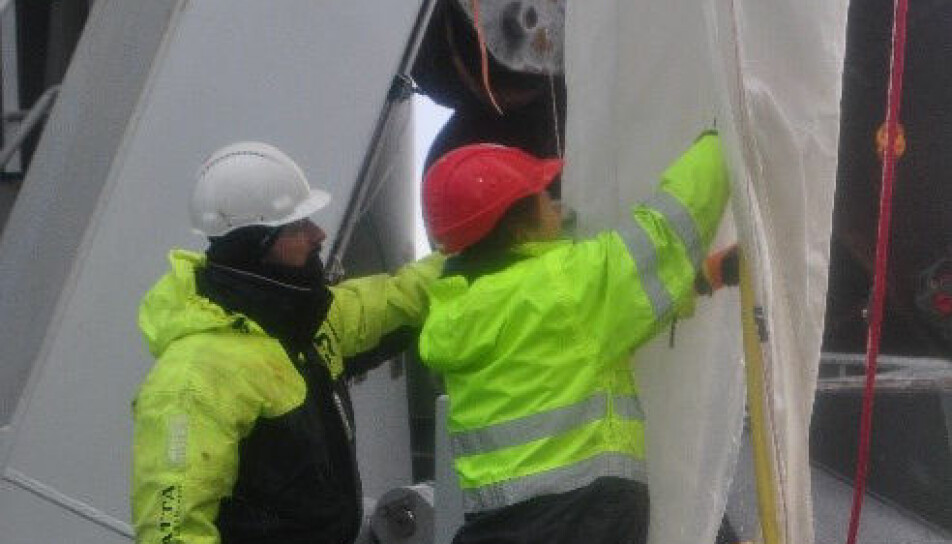
Wandering deck 3 of Kronprins Haakon in the very early morning hours you might meet the queen of nets. Bongo, Multi and MIK gives her the kick and a yet to be determined number of plankton creatures a bath in formaldehyde.
The experimentalists: Maja and Konrad
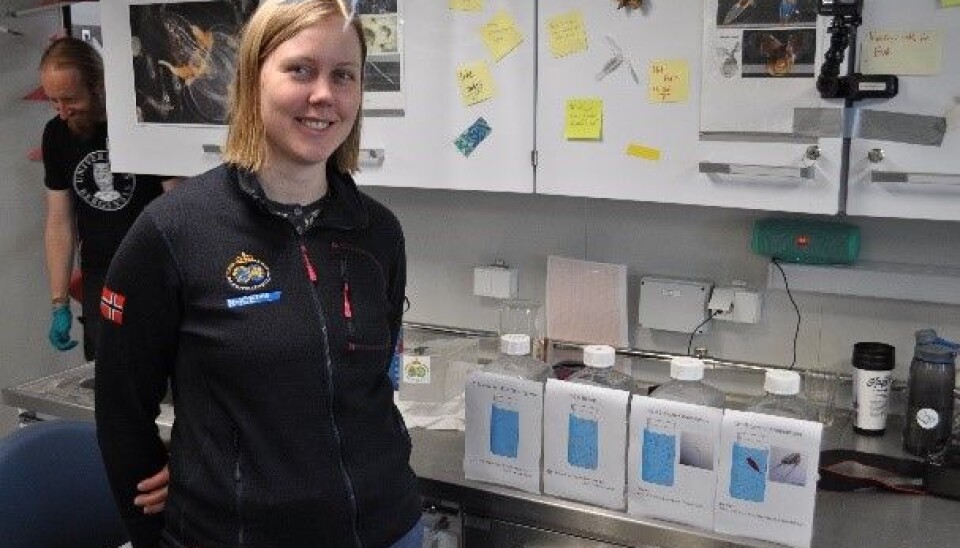
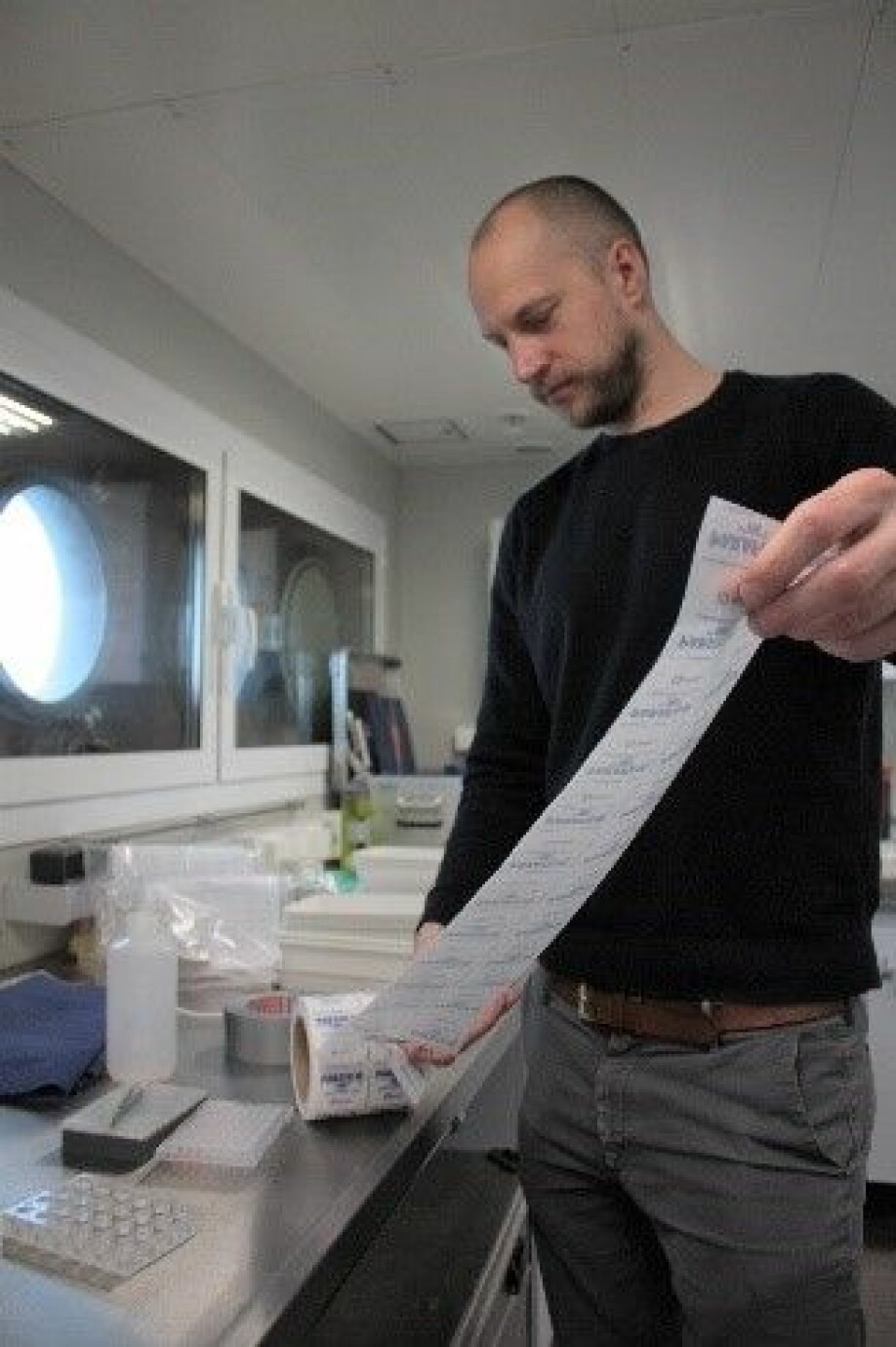
What is the message in the bottle (or cell plate)? To understand how tiny planktonic organisms breath, grow and are being eaten the experimentalists subject them to different treatments for the message to be revealed.
The central node: Miriam

With 35 scientists yearning for samples of water and ice you need someone in charge, otherwise chaos is large. With organisational skills and iron fist the water budget was never at risk.
Filtration goes viral: Stefan
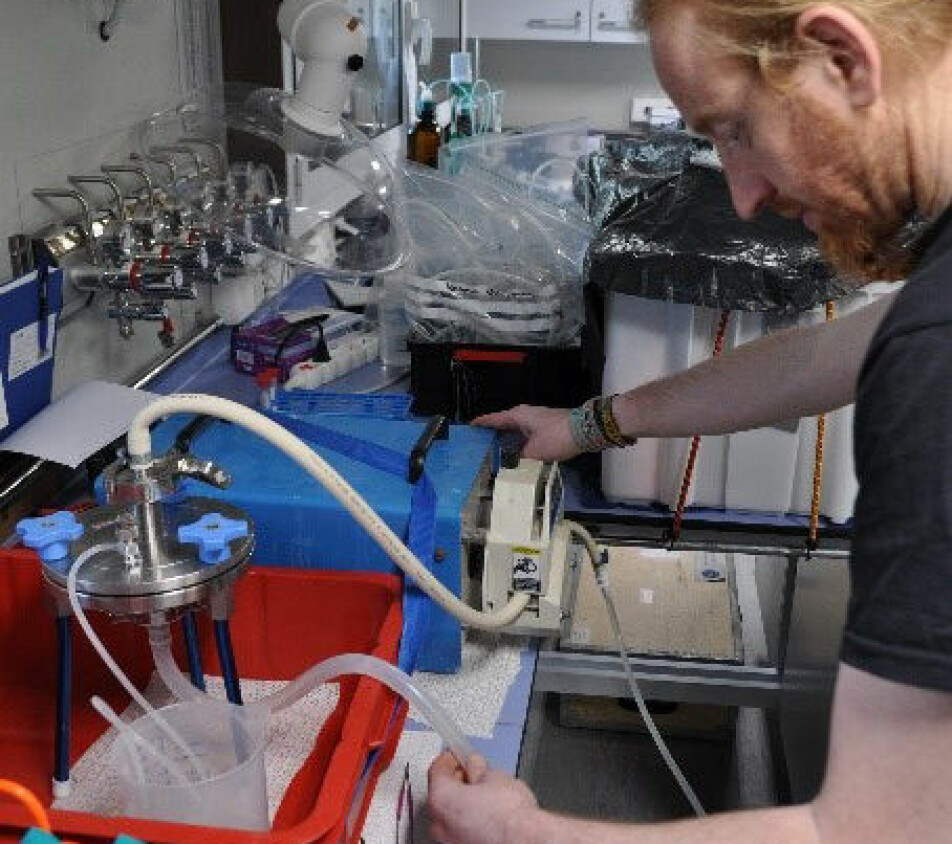
Everyone has heard of viruses these days but that every drop of seawater contains millions of them is certainly less well-known. Despite the mind-boggling numbers getting a sufficient sample is a tedious, slow and at times annoying job.
Chalk-woman: Griselda
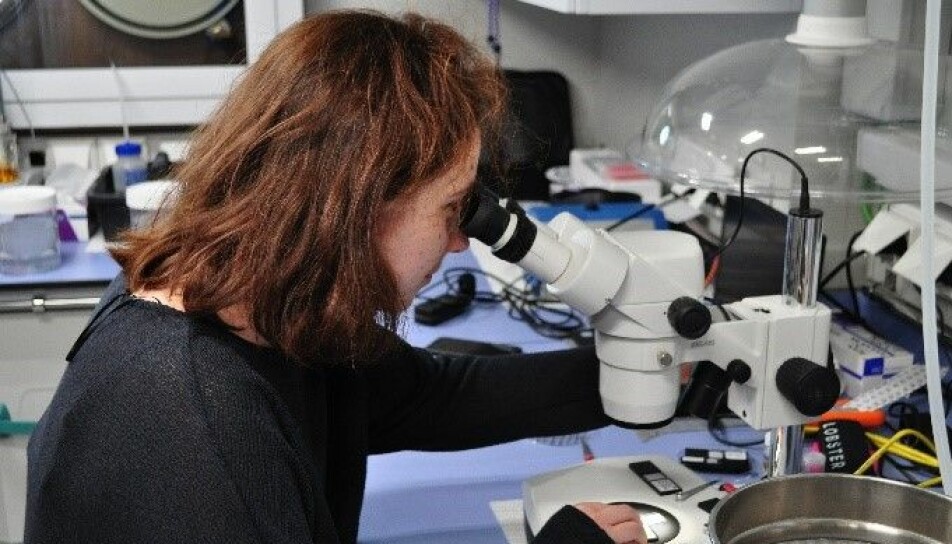
Chalk- woman is sieving through the ocean depths for the hunt of tiny creatures building calcareous shells. As the ocean turns sour these creatures are among the first to suffer from our human actions and the Arctic Ocean is the epicentre of this global trend called ocean acidification.
The analysts: Libby
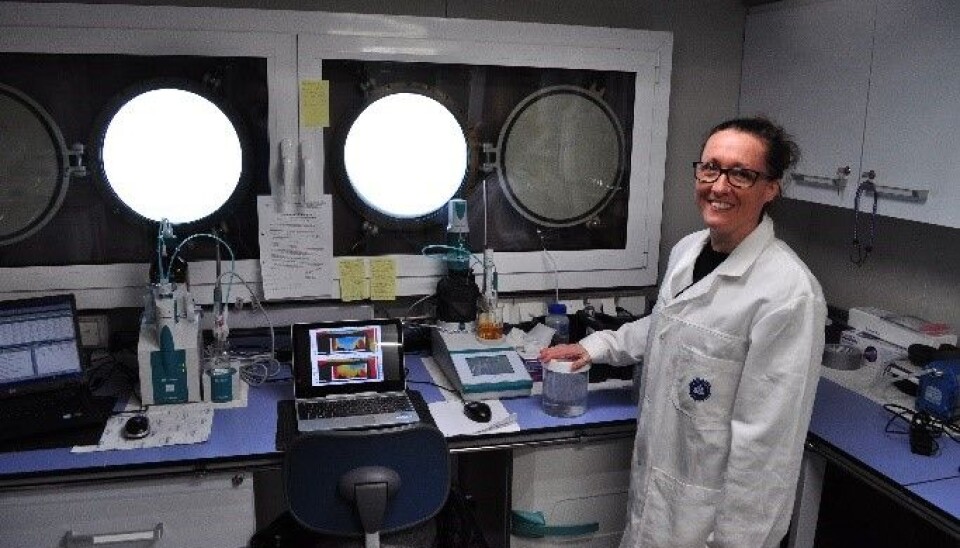
A drop of water can tell you a lot about its history and chemical make-up. With sampling and analytical skills that border perfection the sea around us can no longer withhold its chemical secrets once the analysts has turned on her machines.
And last, but not least...
The Arctic tribe would however still be sitting at the dock in Tromsø dreaming about Arctic adventures if it weren’t for the crew of research icebreaker «Kronprins Haakon» navigating us through icy waters, ramping up horse powers as needed, deploying all the instruments and collection gear scientists like to throw into the ocean and feeding us delicious food every day.
Thank you!







